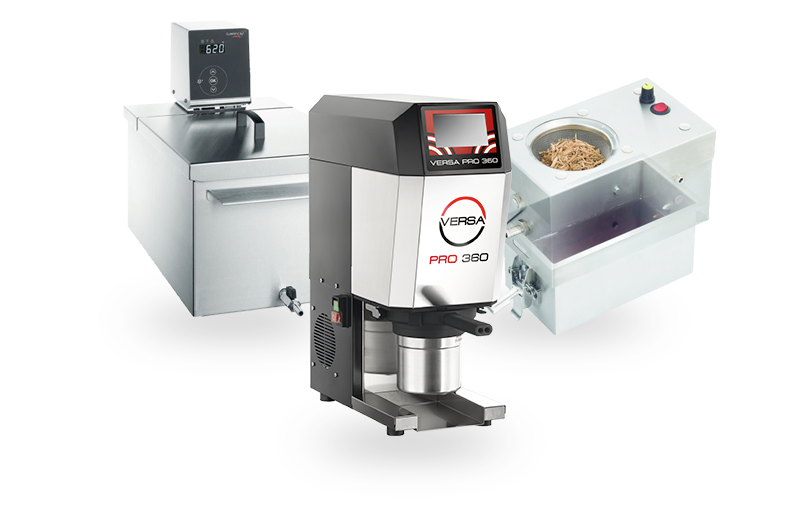Sous Vide Machine Compared to Crock Pot: Dinner Made Easy
Sous Vide versus Slow Cooker – Low and Slow
Sous vide machines and slow-cookers, commonly known by the popular brand-name Crock-Pot, both offer convenient meal preparation for busy kitchens using the low-and-slow cooking method in an unattended pot but they differ greatly in their technique and result.
Though originally invented in 1936, the slow-cooker grew to popularity in the 1970’s when working mothers needed a convenient way to prepare meals while working outside the home. Sous vide was developed around this same time, as an industrial food preservation method for commercial kitchens but has become popular for home cooks as well.
During slow-cooking, raw foods are placed in a liquid, such as stock, wine or water and heated to 79–93 °C (174–199 °F) for up to 12 hours. The device holds heat and moisture, distributing flavors throughout as the cooking liquid circulates.
Sous vide, which means “under vacuum” in French, requires air to be removed from the packaging of foods vacuum-sealed in a bag, typically with herbs, spices and oil or butter, placed in a water bath and cooked at an accurate and consistent low target finish temperature for an extended period of time selected specifically for the type of product, thickness and desired result. Similar in convenience to a crock-pot, the immersion circulator will do all the work for you, but with greater precision and versatility.
Comparison of Quality
Value – Slow cookers are good for tenderizing cheaper cuts of meat. As well as the tenderization of protein, sous vide machines can maintain them at a desired doneness – such as medium rare, gently poach fish and chicken, prepare beef or pork to a precise temperature or perfectly cook a surplus of in-season vegetables.
Nutrition – Among the conditions which contribute to nutrient-loss in foods are high heat, prolonged exposure to heat, exposure to air and immersion in water. Slow cookers often provide all of these risk factors while sous vide cooking offers greater protection from them, sealing in nutrients and yielding a higher quality meal.
Flavor – Because slow cookers retain the juice which the food is being cooked in, the most flavorful ingredients tend to permeate the entire dish. During the vacuum process used for sous vide cooking, natural flavors and juices are sealed in and because each component of the meal can be placed in its own separate bags they retain their unique flavors. This, combined with the VOC (volatile organic compound) stability, means flavor additives retain their natural potency.
Texture – Slow cookers are excellent for tough cuts of meat where the long slow cooking time softens connective tissue without toughening the muscle but because of their heat retention abilities, they tend to over-cook most vegetables.
Sous-vide cookers offer little chance of overcooking since the cooking only continues until the center of the food has reached its target temperature. This allows vegetable to be kept crisp and meats to be brought to safe temperatures without becoming overdone. In addition, tougher cuts of meat can be tenderized while retaining the desirable qualities of a more preferred temperature, such as medium rare. Once the food is cooked and you are ready to eat, you can sear the ingredients to add texture, top with your choice of sauces or seasonings, serve and enjoy.
Convenience and Safety – Both appliances are safe enough to be left unattended as they cook for hours allowing the chef to be engaged in other activities or out of the kitchen altogether. Sous vide also allows for foods to be prepared and stored for finishing when ready to serve. Because it is vacuum sealed, foods cooked using the sous vide method can be safely stored, without fear of cross contamination, and the meal prepared later. If bagging is done properly and the item cooked for the right amount of time, sous vide even allows for pasteurization which extends the shelf life of the product and increases its safety.
Sous Vide Machines
There are articles offering instruction on how to create an immersion cooker using, “a cheap slow cooker …and an elementary knowledge of wiring.” Aside from the obvious risks of rewiring an inexpensive appliance, such devices lack the precise control or monitoring offered by a high-quality sous vide machine. A premium immersion circulation cooker will provide precise temperature control, bringing the cooking water to temperature quickly and efficiently, then maintaining the preferred temperature for extended cooking times.
Explore the fusionchef line of products by Julabo USA to find the right equipment for your needs, then compare the methods yourself to see if you agree that sous vide is the better way to cook low and slow.

